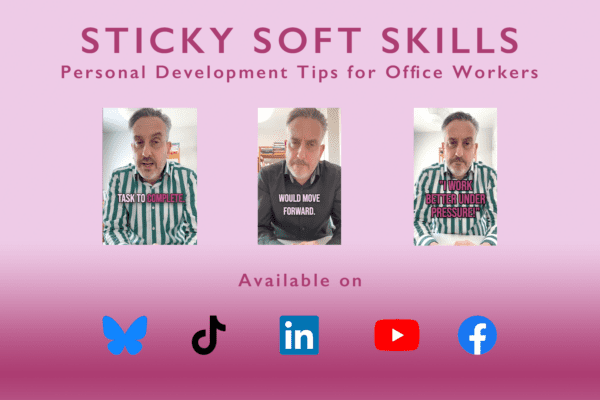Finding and Keeping Great People Starts Here
Employee value propositions, or EVPs, sum up the qualities people recognise in businesses that make them keen to join them. And these same qualities make people want to stay in their jobs. As an ad agency head wrote recently on LinkedIn, most industries have felt the Great Resignation’s effects since 2020. It’s an employee’s market now. Employers are struggling to recruit and retain good people, from creatives to front-line workers like HGV drivers. And employee value propositions are taking on a new importance.
In this article, we consider what an employee value proposition is and why it’s so important to get yours right. We explore how to write a good EVP and judge its impact. And we end with possibly the most compelling EVP ever, from the Submarine Delivery Agency. Are you offering people jobs that are worth doing? Then it’s worth getting your employee value proposition right, and communicating it effectively.
Are Employee Value Propositions the Same as Organisational Values?
Employee value propositions are similar to organisational values, in setting out a consistent vision for companies’ activities. Spanning the cycle from recruitment to staff retention, EVPs are particularly important in keeping growing businesses focused on their employees.
You Need To COMMUNICATE Your Employee Value Proposition
In today’s competitive marketplace, smart employers are wising up to how best to attract and keep talented people. It’s about more than (just) pay and benefits. You need a good reputation and a great value proposition. But you also need to communicate it effectively, with an impactful Employee Value Proposition presentation.
There are various slide templates to help you create this, including PowerPoint and Google Slides. But first, you need to look at what your employee value proposition should include. There are four key components:
- Economic elements: Show me the money! This part covers salary, bonuses and compensation, share schemes and other important financials.
- Employment benefits: These include holidays, health insurance, illness and injury and workplace pensions. They also encompass perks like car allowances, cycle to work schemes and health club and gym memberships.
- Environmental benefits: This part is about the work environment and culture. Are there flexible working hours and remote working opportunities? Giving employees a good work-life balance is essential these days, particularly people with young families.
- Professional development: This covers courses, training and other opportunities you offer for personal growth. As Maslow’s Hierarchy of Needs reminds us, it isn’t enough to give employees money for their basic requirements. People also want self-actualisation.
You need to spell this stuff out in the recruitment process. Candidates may be too keyed up in the actual interview to take in all the details you share. But beforehand, they’re likely to be reading all they can about your company on their phone. That’s why presenting your EVP memorably is so important.
How to Create Your Employee Value Proposition
Experts say there are four steps to this:
- Evaluate what your company has to offer. What are your strengths and weaknesses?
- Compare yourselves with the competition. See what sets you apart.
- Set out your Employee Value Proposition in an EVP presentation so you communicate it impactfully.
- Assess the response to your EVP each time you present it, and monitor your progress.
You can add a fifth step here. Be open to feedback, and prepared to take the appropriate action. You might have to change your presentation. And you might also have to tweak your offer! But don’t you want to attract and keep the best people? That’s what this is about, don’t lose sight of it.

Sticky Learning ® is 7 times more effective than 1-day training courses. Plus, you will get a Chain of Evidence proving your Return on Investment. Discover soft skills training that changes behaviours long term.

Measuring The Success of Your EVP
We live in an age of KPIs. Everything has to be measurable, so you can see your return on investment. People have come up with various detailed measuring systems for EVPs. But ultimately, the test of your employee value proposition is whether it helps you attract and keep good staff. There are some specific indicators you can track:
- Social media engagement.
- Numbers of job applications.
- Staff turnover and headcount changes.
- Feedback on the grapevine.
- Hits on your website’s job-related pages.
- ‘Cold’ enquiries about jobs.
- Employee satisfaction surveys.
I Don’t See Why I Need to do This
Authoritative leaders running small businesses might think all this sounds unnecessary. I give someone a job, and pay them for doing it. End of. I hear you! But recruiting someone, and then leaving them on the wire, won’t do much for your working relationship with that employee. Inevitably they’ll start thinking about leaving. Or if they don’t, chances are the people around them will suggest it. And also, your other staff will notice how you’re treating this person. And that isn’t good for their morale, or your reputation as an employer.
How to Communicate Your Employee Value Proposition Effectively
Start by embracing your company’s values and committing to living them out, and appreciating your employees’ interests. Aim for ‘win-win’ in all interactions. As we’ve said, a well-constructed EVP will attract new talent and also motivate your current team members. Employers are competing for the best candidates. So say what’s great about YOUR business. If candidates have other offers besides yours, including an EVP presentation in your interviews will help your company stand out. But if your EVP isn’t well constructed, or sounds unconvincing, it will fall flat.
Show Your Commitment with Your EVP

Let’s revisit an EVP’s key components. To attract and keep the best talent, you need to demonstrate various commitments. These include:
- Reward and recognise hard work. Encourage team building and effective communication.
- Set up company offices to support productive working, and make front-line workers and remote workers feel included and valued.
- Empower employees and encourage them to strive for excellence.
- Promote diversity and equality, and encourage employees to feel their work contributes to your purpose and ethos.
- Give employees ample opportunity to grow and develop. Feeling stagnant will impact their performance and motivation. If you can’t offer them a clear career development path, they may look elsewhere.
- Offer training in relevant fields of knowledge. Be kind in how you coach people. Going back to remote workers, just because people are in your office, they aren’t necessarily productive! Some employees may want to work in different locations. If they’re achieving the results, let them. There’s no point commuting every day, if you achieve more at home.
You don’t have to be a big organisation, to set the bar high with all this. But it may call for some inspirational leadership to break the mould and make it reality.
Improvement Starts With Doing Your Homework
You might not get everything right first time, but there’s plenty you can do to get on track fast. Gather impressions from current and past employees. Use surveys to collect feedback from job applicants and focus groups. Conduct exit interviews to understand why employees are leaving. Use the learnings to research employees’ perceptions, and discover what they like and dislike about the company. From there you can work out what you need to improve. You can also see what motivates and improves employee engagement and meets individual workers’ goals and needs.
Tailor Your EVP To The Jobs You’re Recruiting
Speaking of individual workers’ requirements, having a company-wide EVP presentation is all well and good. But when you’re recruiting for specific positions, it’s best to tailor your EVP to the applicants’ likely mindset. From front-line workers to senior managers, bear in mind their challenges in the job and their responsibility levels. And most important, understand their expectations.
People early on in their careers won’t be expecting huge salaries, but they will want opportunities for growth. They will also want a collaborative work environment and supportive leaders. Job hunters with families will probably be looking for financial stability, flexible working hours and childcare benefits. And front-line people will want to feel valued and appreciated.
Communicating your Employee Value Proposition To The Wider Audience

Use the power of your EVP to draw in applicants, during interviews and in the onboarding process. It helps prospective employees decide if your business is the best fit for them and their aspirations. Use all your available communication channels to promote your employee value proposition, internally and externally. Highlight your EVP in social media, newsletters, blog posts and internal communication tools, everywhere.
The people who run Amazon go one further. They co-create video content with their most engaged employees, giving them the chance to share their experiences and stories. These videos highlight the career opportunities and critical parts of Amazon’s EVP. They also showcase Amazon’s commitment to social good, and opportunities they give employees to find purpose in their work.
Put Your EVP At The Centre Of Your Employer Branding Strategy
In today’s competitive environment, jobs have to be marketed. That’s true in recruitment, but it’s also true in communicating with existing staff and building relationships. To present your business as an attractive employer, you need to build your employer brand:
- Define an unforgettable Employee Value Proposition.
- Create a positive and lasting candidate experience.
- Retain your top talent for the long haul.
Leaders and managers talk of the importance of nurturing their creative and professional talent as an asset. So you might think EVPs are primarily focused on staff in particular office-based roles and seniority levels. But they’re also important in attracting and retaining front-line staff: drivers, salespeople, call centre teams and the rest. Autumn 2021 saw a HGV driver shortage due to COVID, Brexit and other factors. It’s out of the headlines now, but the problem’s still there. Whoever you’re reaching out to, it’s important to communicate your employee value proposition. And it comes down to saying why they would be happiest working for you.
Employer Brand Strategy: The Art of The Possible
A growing number of marketing agencies specialise in employee communications. They use the latest research methods to develop clients’ EVPs across the employee lifecycle. From there they develop communication strategies to capture an inspiring employee experience and deliver consistent messaging. Companies develop employer brands the same way they build consumer brands, using these specialist agencies to create a consistent message.
Aspects of an employer brand strategy can include:
- Leadership communication.
- Recruitment branding.
- On-boarding.
- Retention.
- Learning and development.
- Career development.
All of this contributes to building up the business’s employee value proposition.
And Finally: Understand, Refine, Express, Activate: EVPs On The Frontline: We All Work in a Yellow Submarine

As we’ve been saying, your employee value proposition needs to express your business’s heart and soul. That means, who you are, what you stand for and the work experience your employees can expect. Here’s a quick recap:
- Understand: You may not have formally defined your EVP yet. But you’re still sending a message to current and potential employees about your business’s values and priorities. So understand your EVP, and strengthen and shape it to best effect.
- Review and refine: Confirm with your employees that your EVP tells the real story of what they value most about working for you. Review your communication channels. Look at your communications and marketing. And check what the competition is doing.
- Express: Adjust and strengthen your EVP, and make sure the narrative is strong and consistent.
- Activate: Live out your EVP every day, and turn your people into ambassadors for your employer brand.
You’ve Got me Working on the Front Line
We quoted an ad agency head talking about the Great Resignation. McKinsey calls it the Great Attrition, as in losing numbers. They cite September 2021 research showing that 40 per cent of employees across industries are considering leaving their job in the next six months. And nearly two-thirds would do so without a job in hand. It gets worse with frontline-heavy businesses, where workers are less likely to find purpose in their work, and more likely to move on. McKinsey’s EVP strategy for these companies is:
- Be specific about what great workers look like.
- Make your value proposition as clear as possible.
- Source talent locally and through non-traditional channels.
- Get people through the door quickly.
- Offer competitive compensation and benefits.
In a later study, McKinsey found nearly half of frontline-heavy employers weren’t actually experiencing higher turnover. And over a third didn’t believe turnover would worsen. McKinsey researched their frontline workers, from truck drivers to salespeople, to find out what was making them stay loyal. Their employers showed all the key elements of great EVPs that we’ve been talking about:
- Energising employees through meaningful work.
- Investing early in relationship development with co-workers and managers.
- Promoting a culture of development.
- Providing the resources and environment to balance stress and wellbeing.
- Motivating with financial and non-financial incentives.

We All Work in a Yellow Submarine
Finally, a frontline-heavy employer that really energises its employees through meaningful work is the Submarine Delivery Agency. Part of the Royal Navy, their EVP presentation is seriously awesome:
- We support: We support you to bring your whole self to work each day, to grow and to thrive.
- We deliver: Sometimes a chance comes along to do something really different.
- We aspire: We will enable you to grow your success and contribution. We do this by placing your personal and professional development at the heart of our drive for excellence.
The Submarine Delivery Agency sums it up in a tagline fit for heroes: “Proud to do the right thing, the right way, all of the time.” Take the lead from the SDA! Make your employee value proposition inspiring, and your people will feel proud to come on board with your business.




